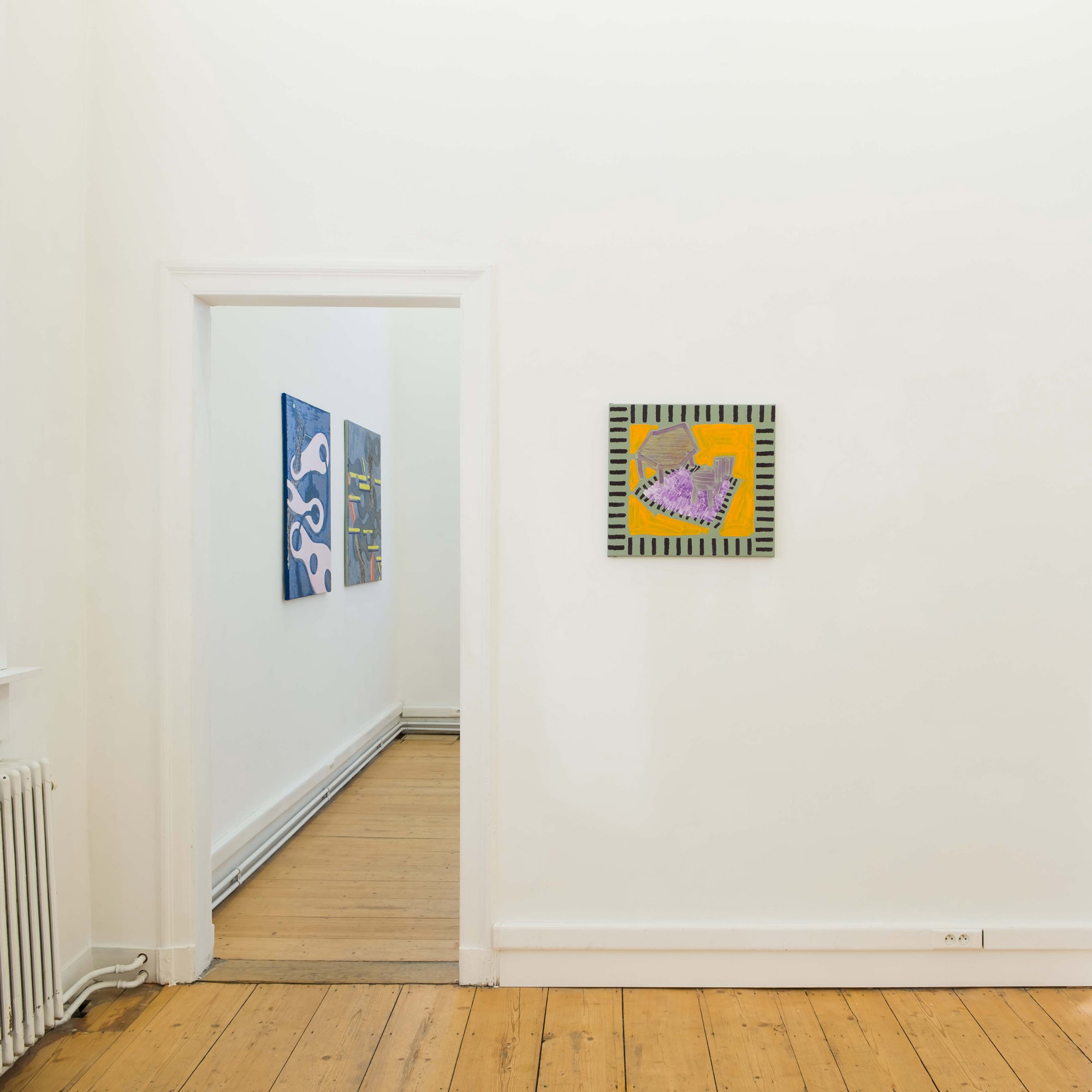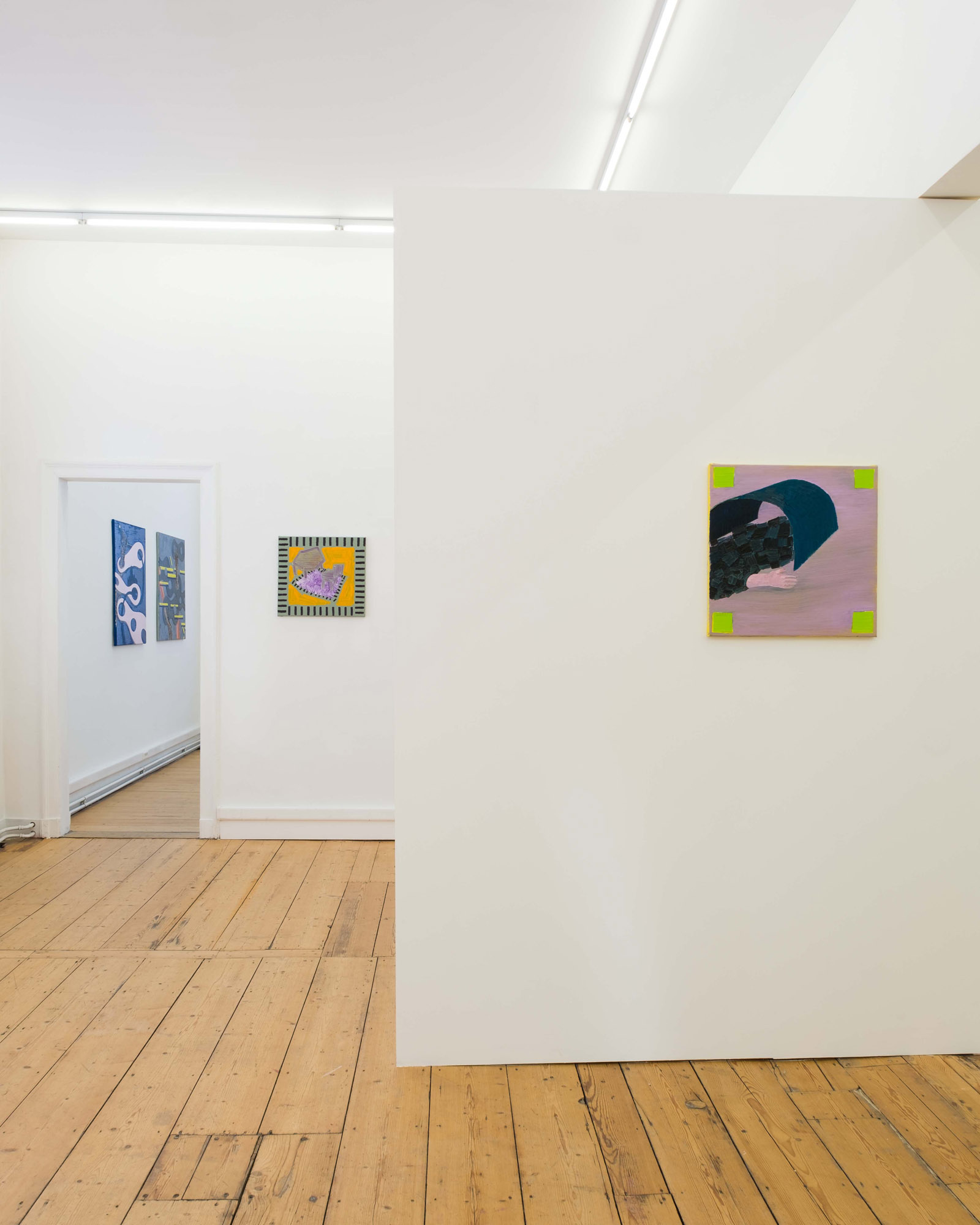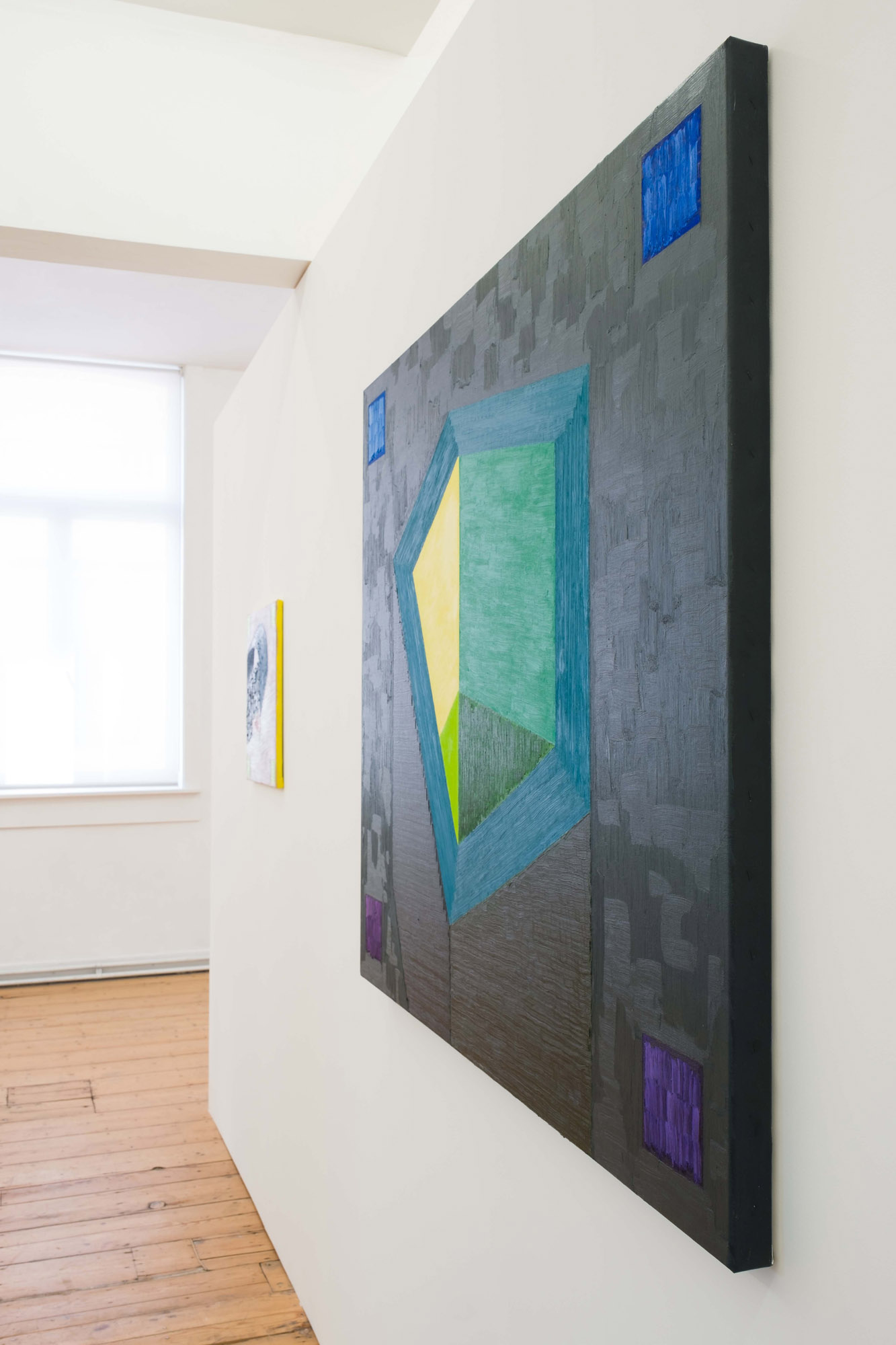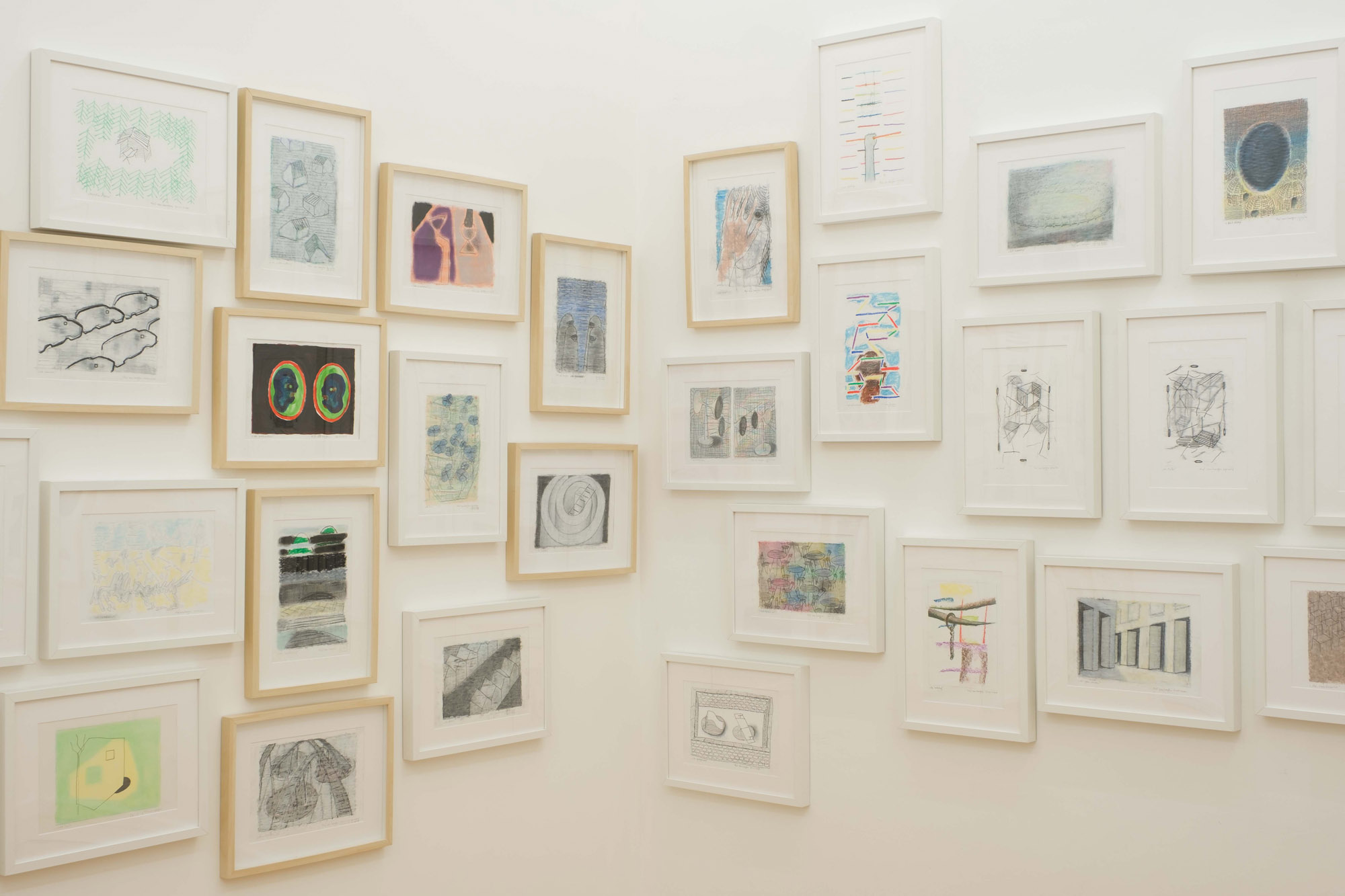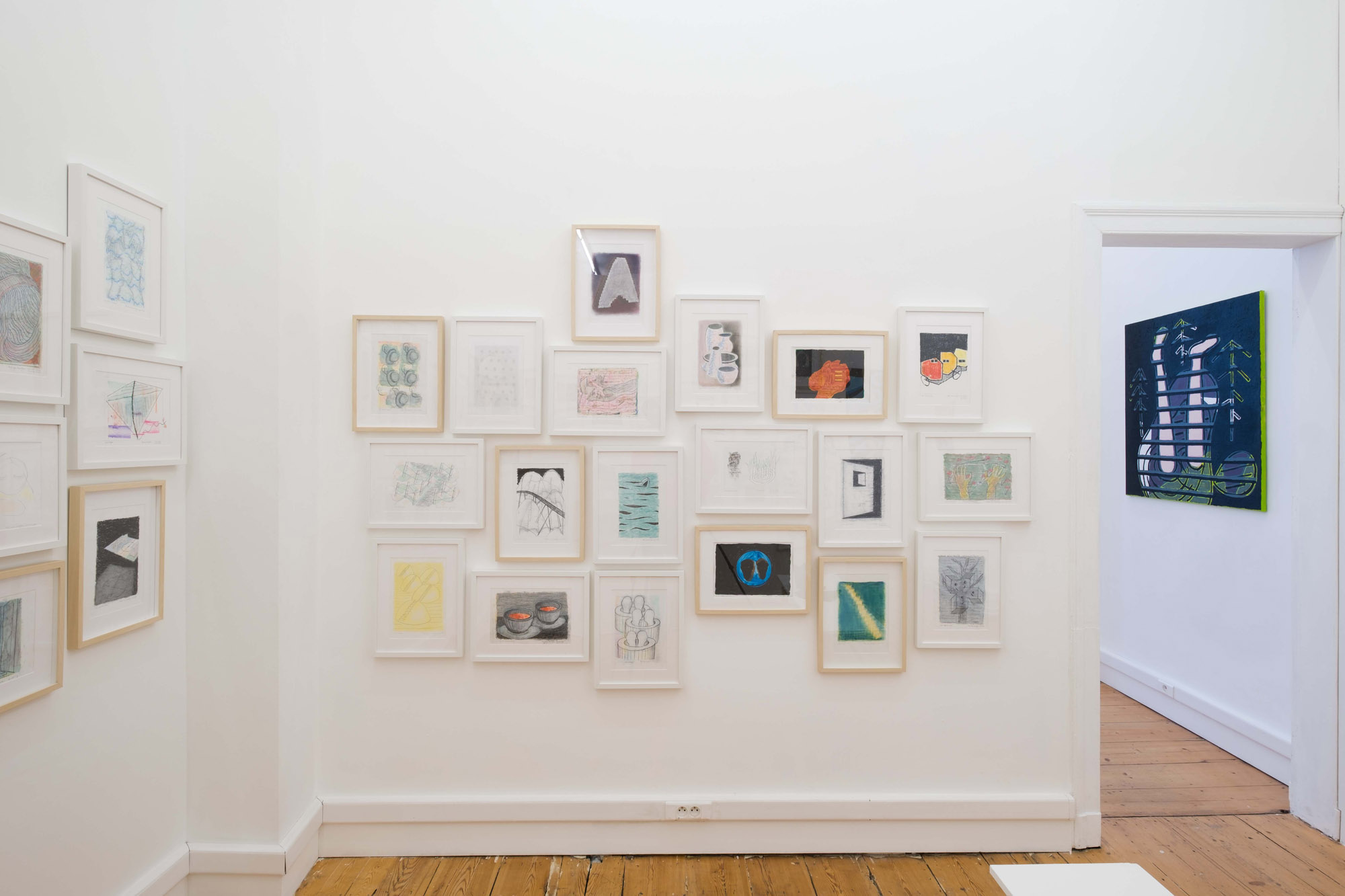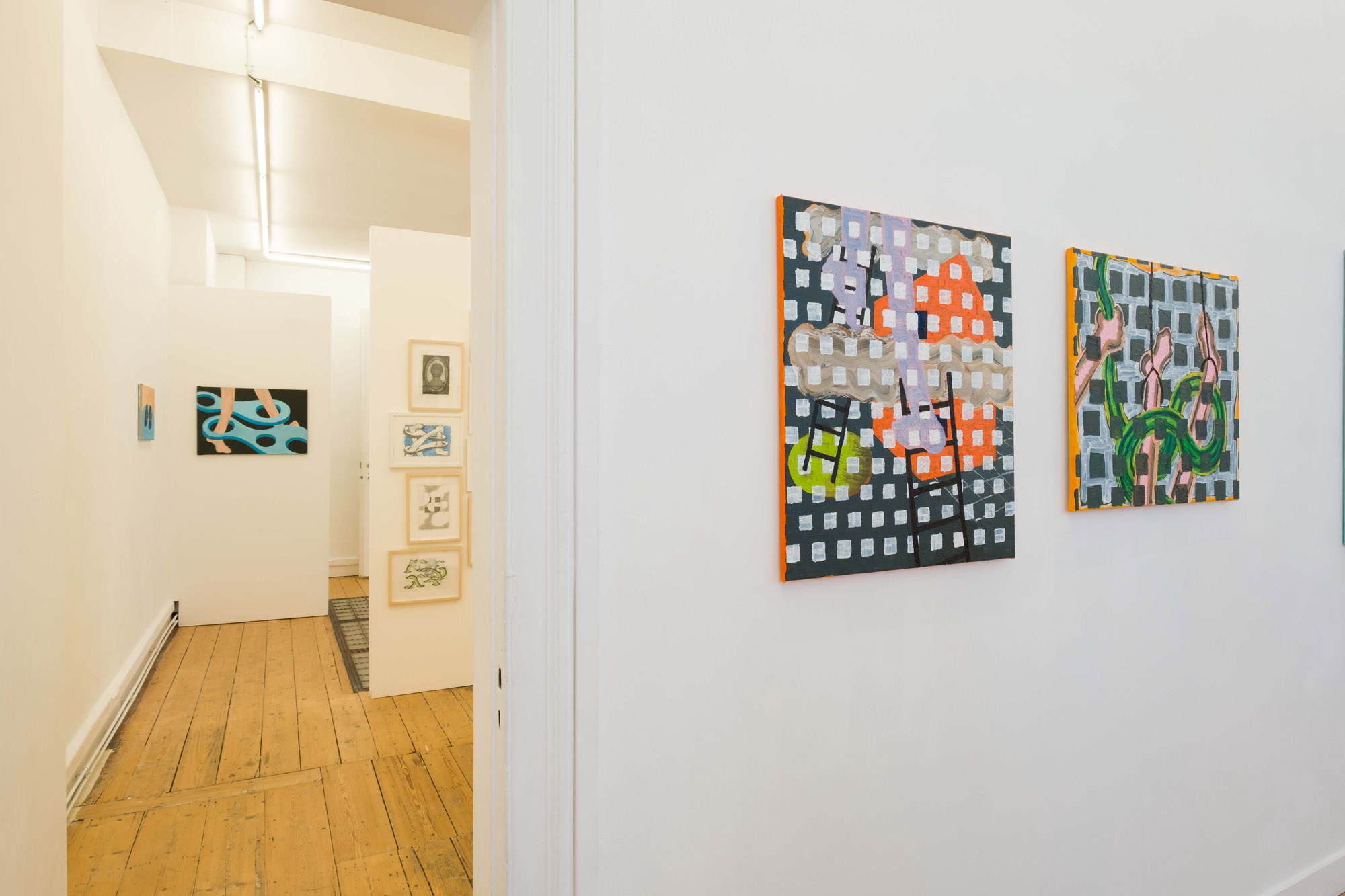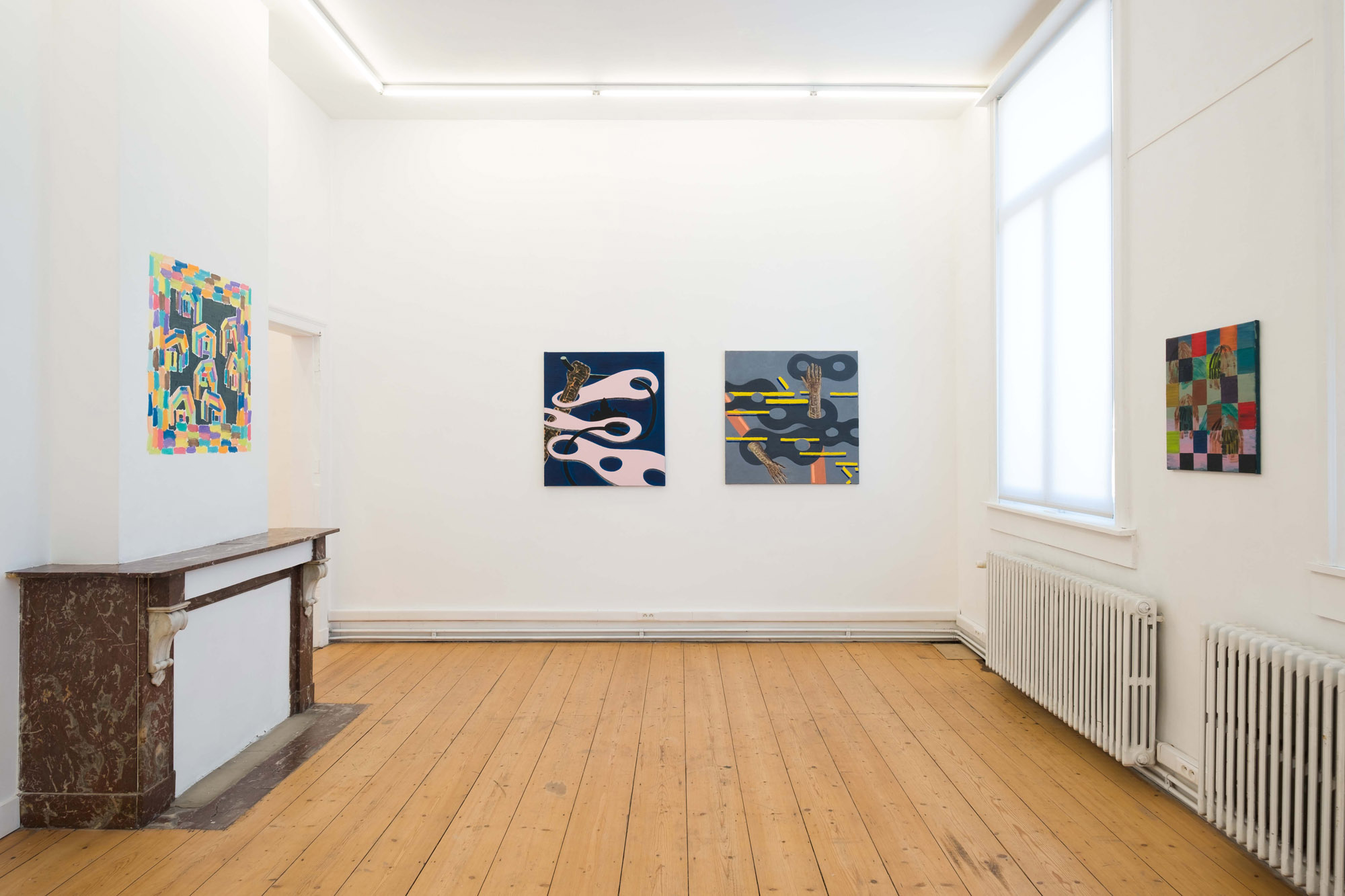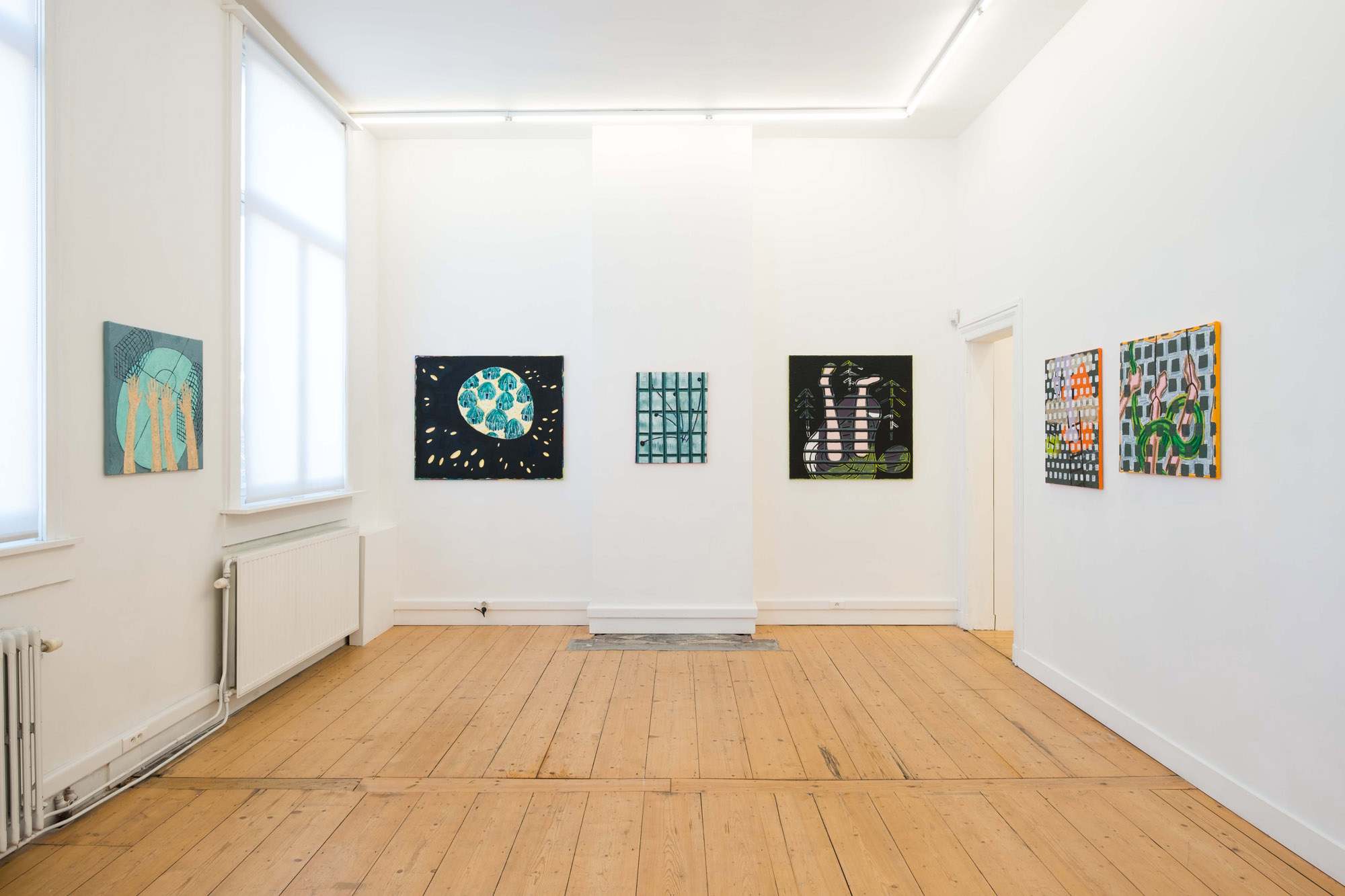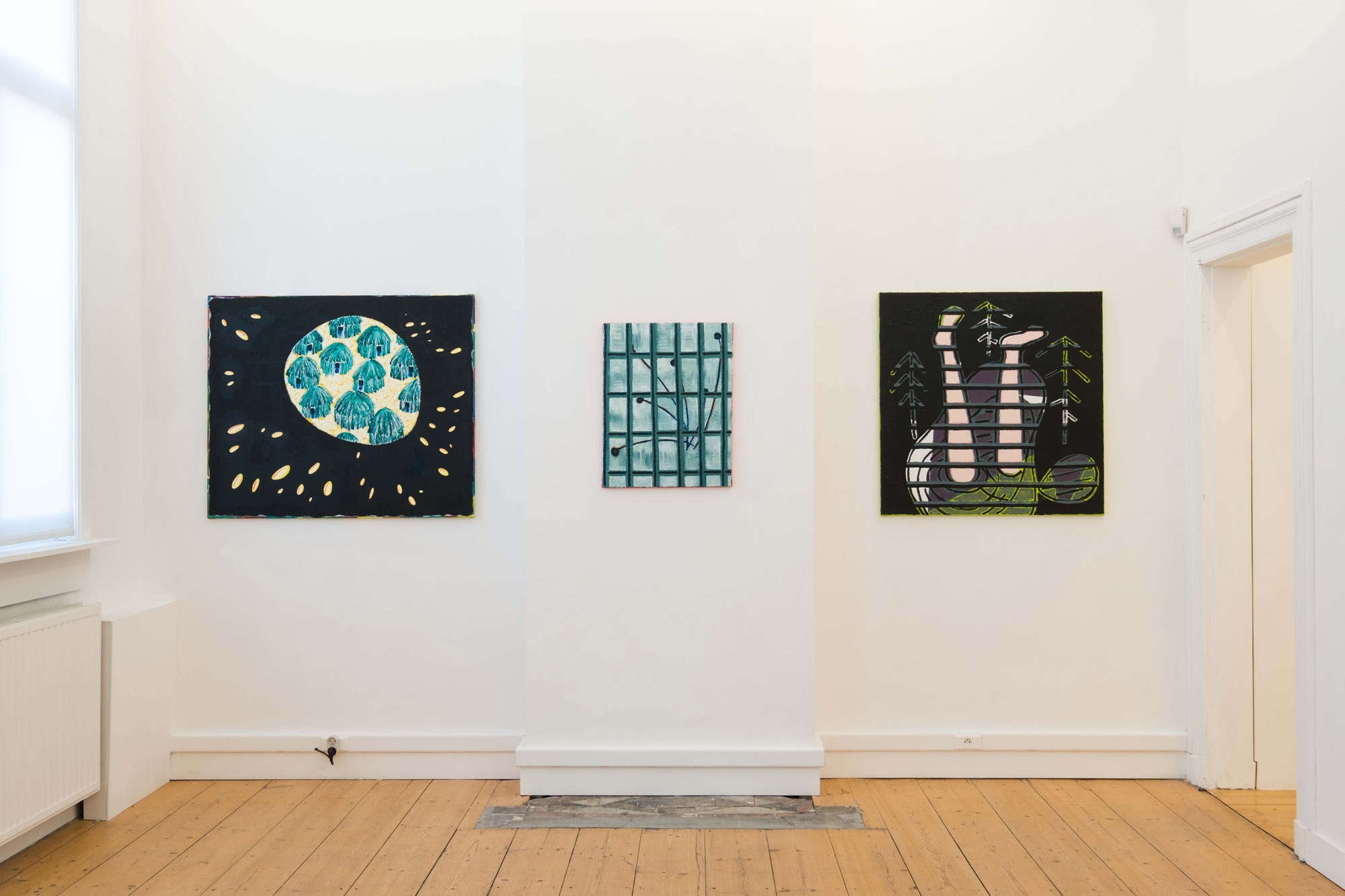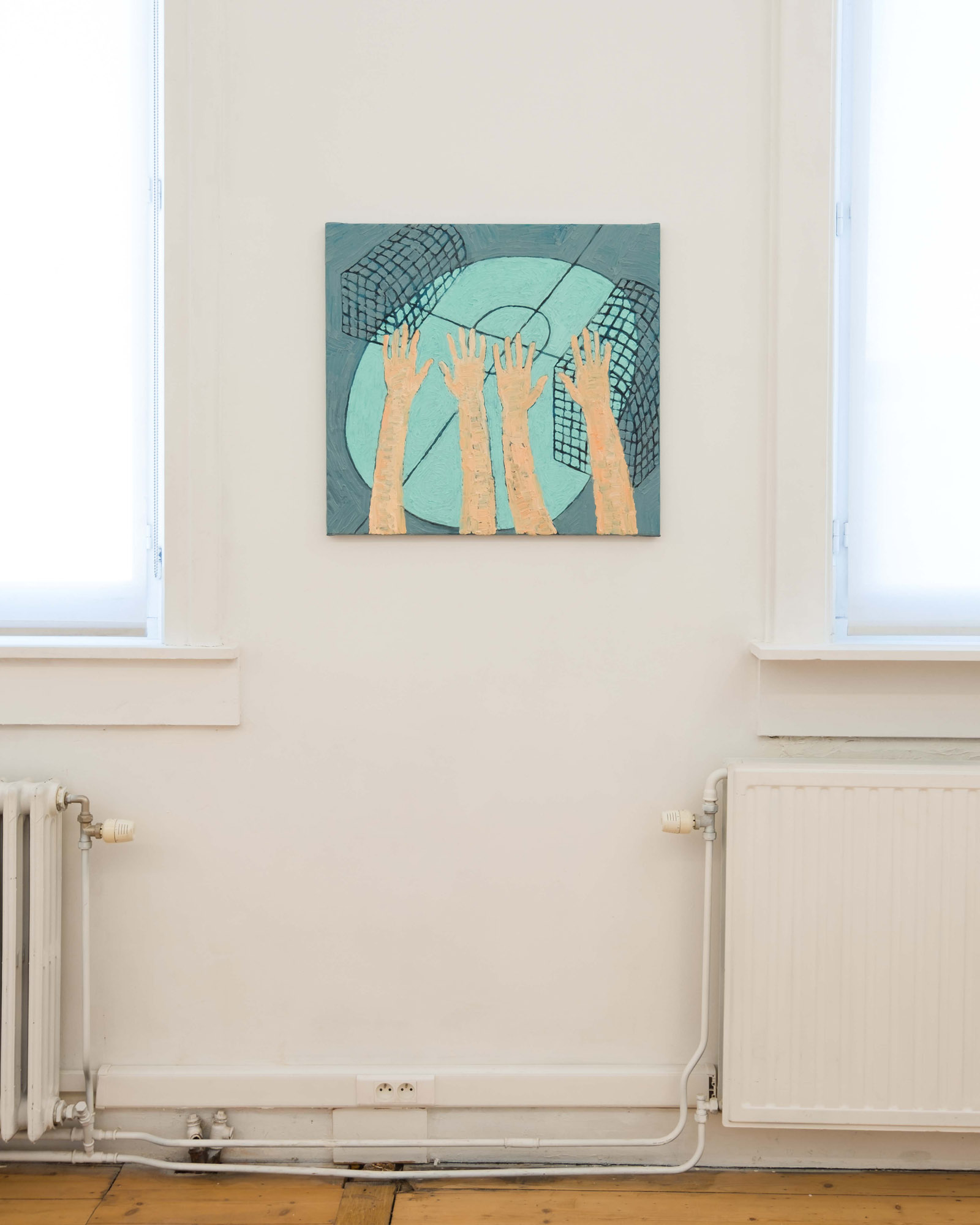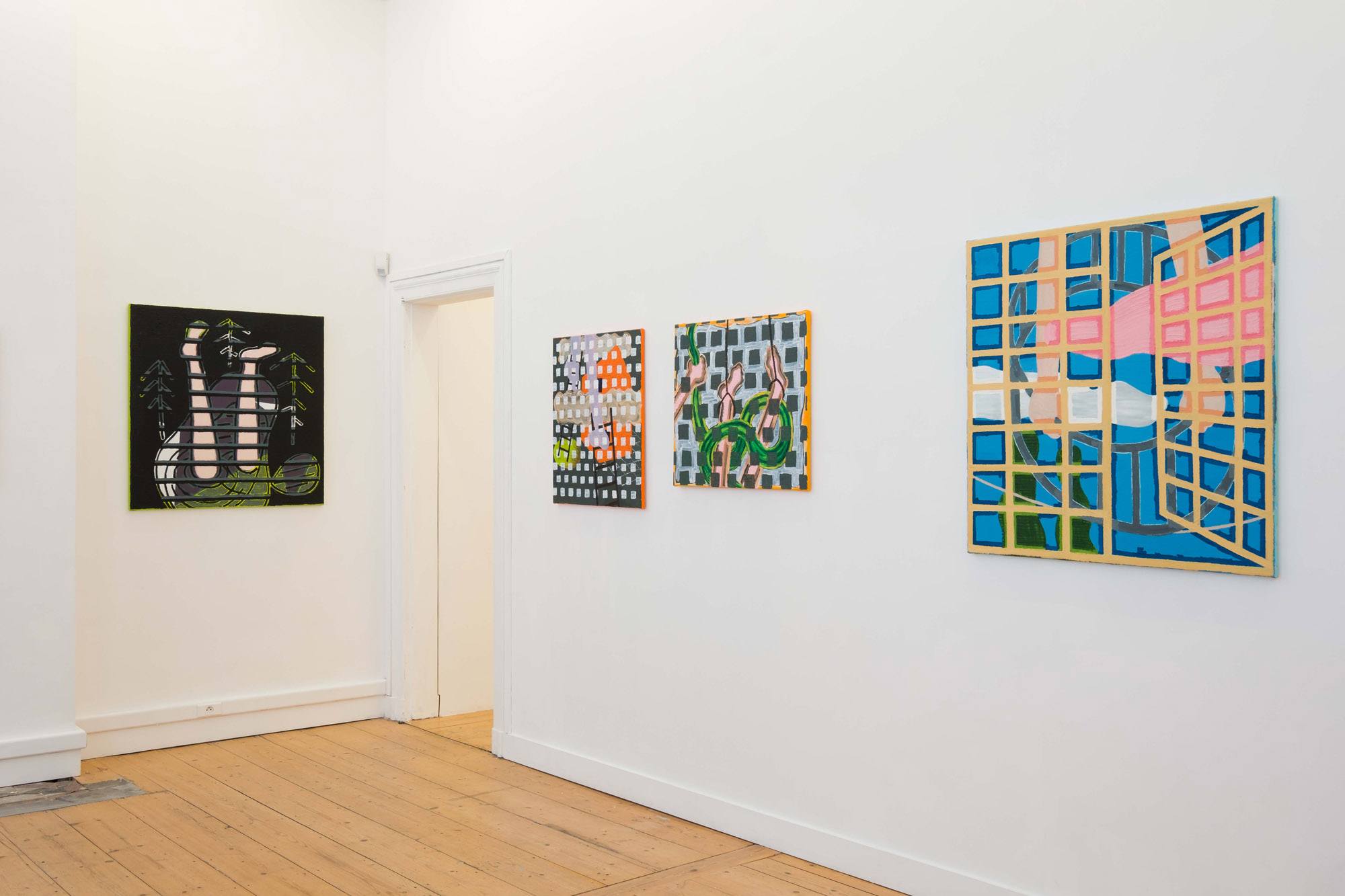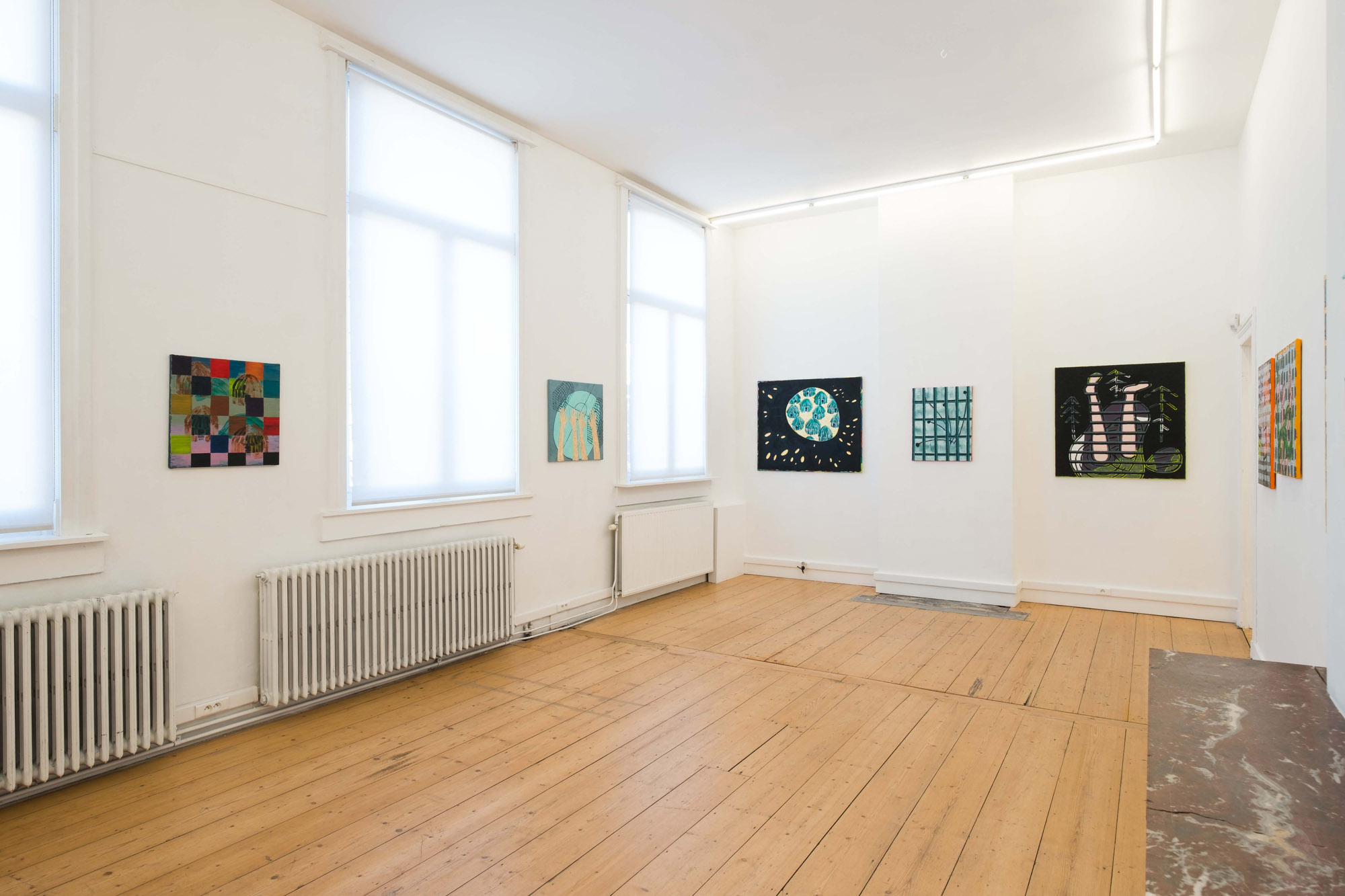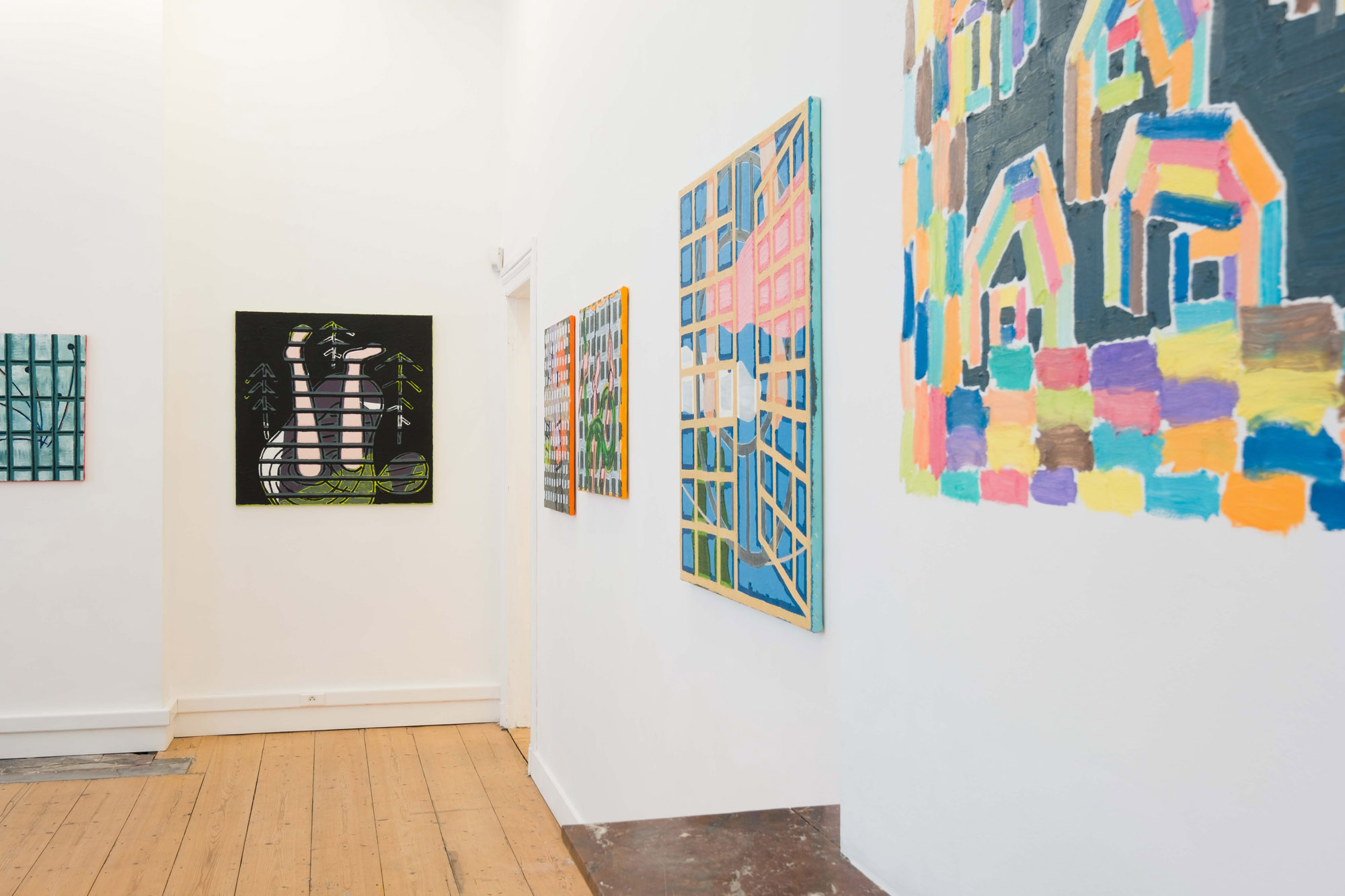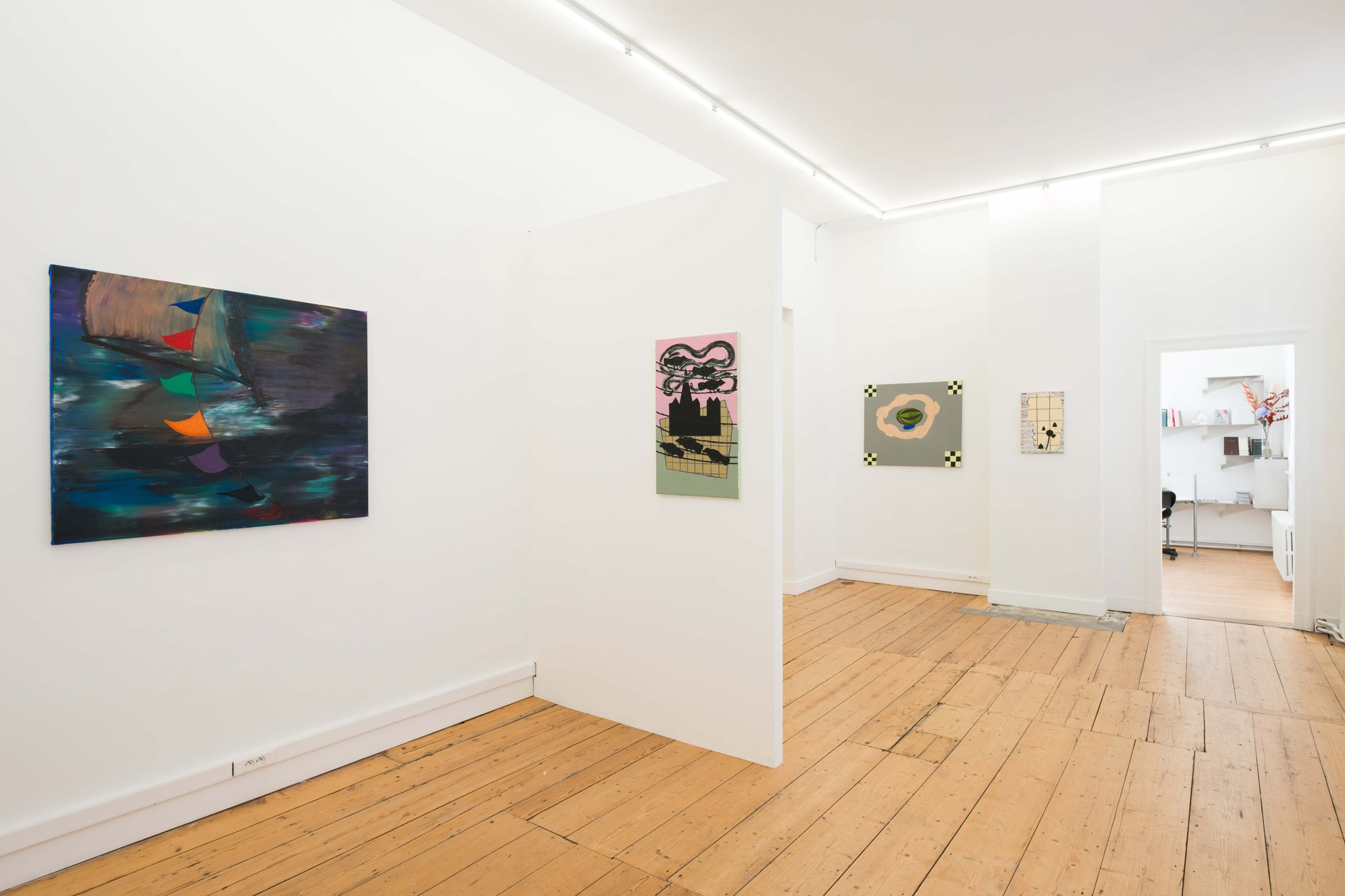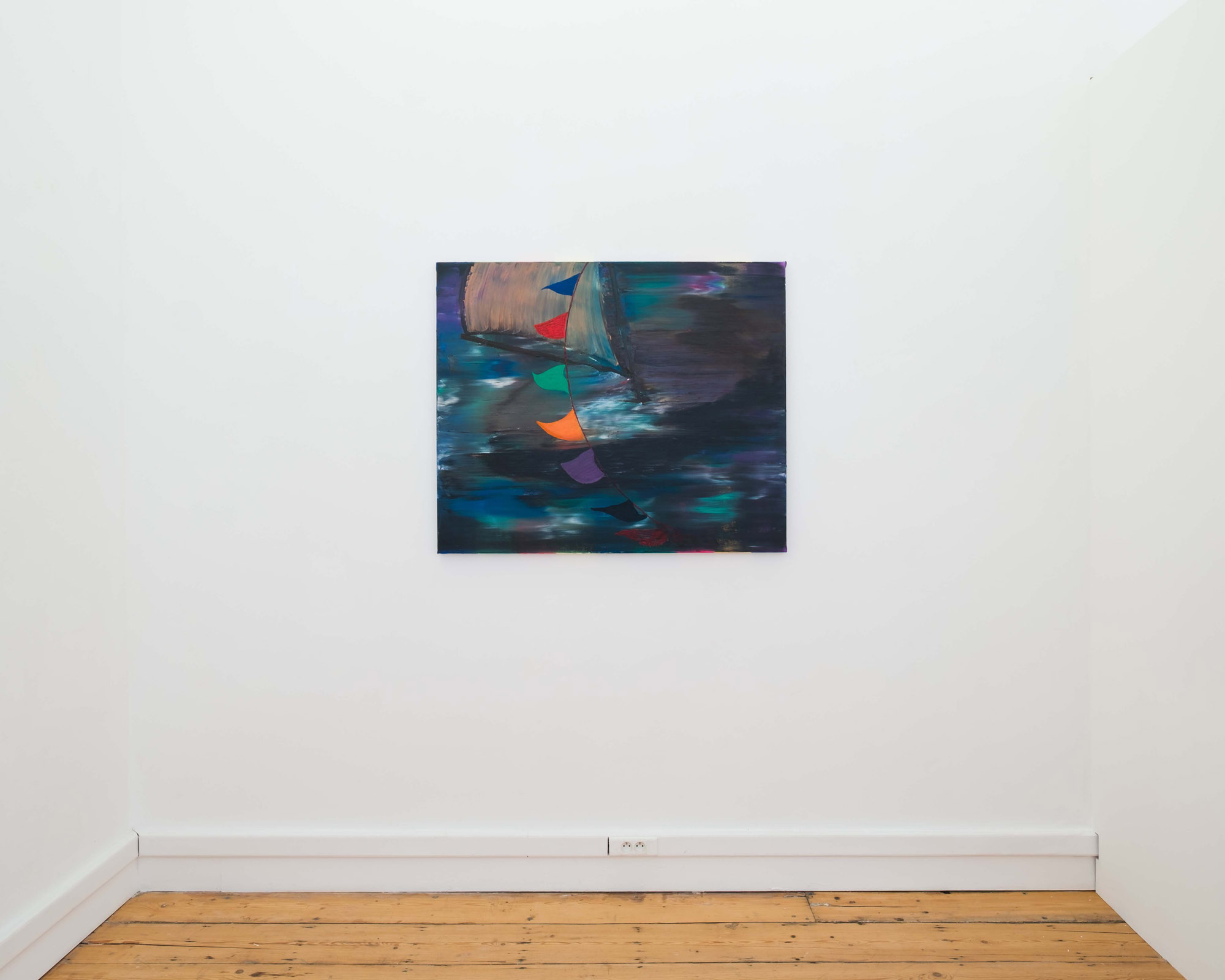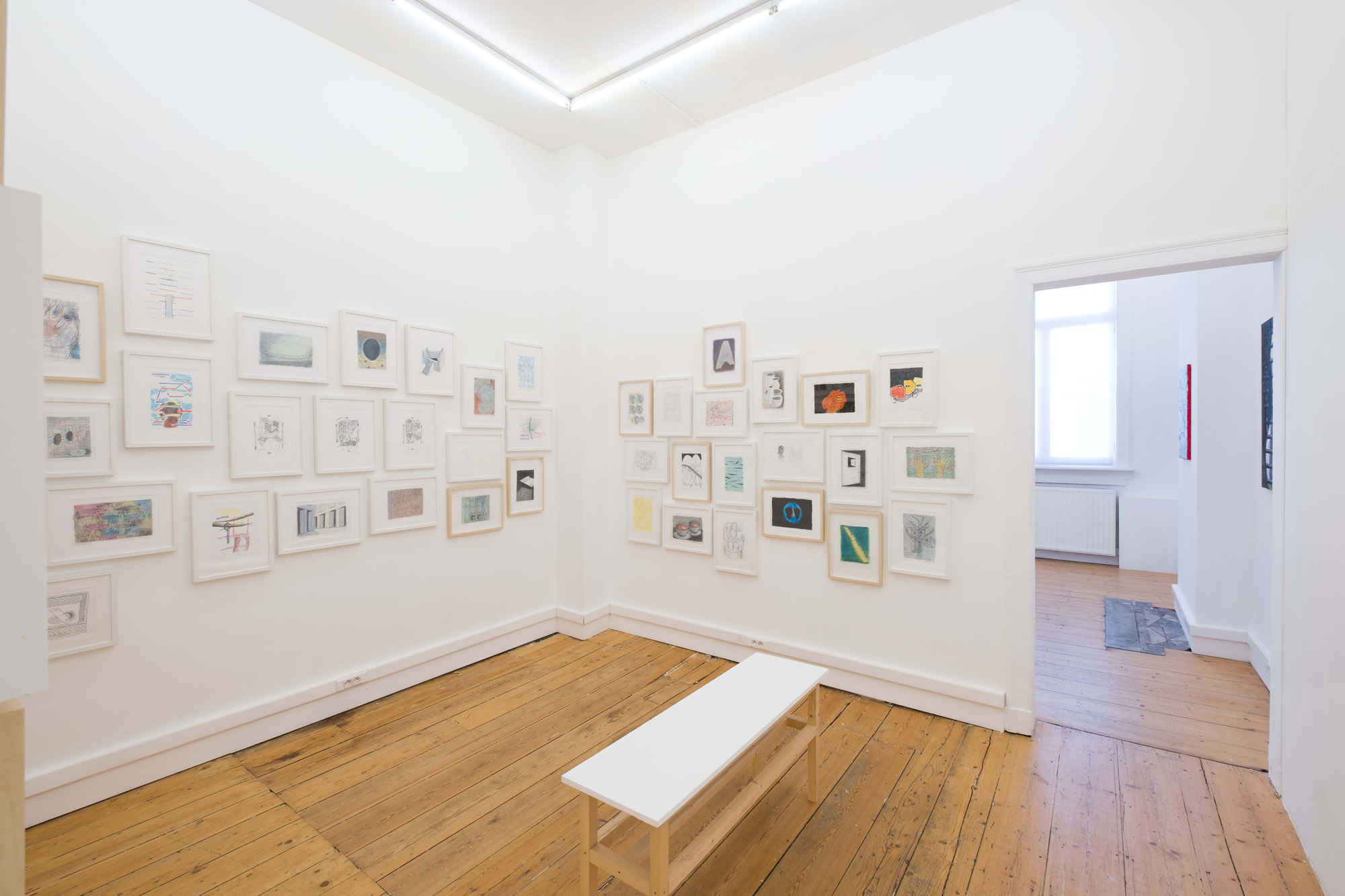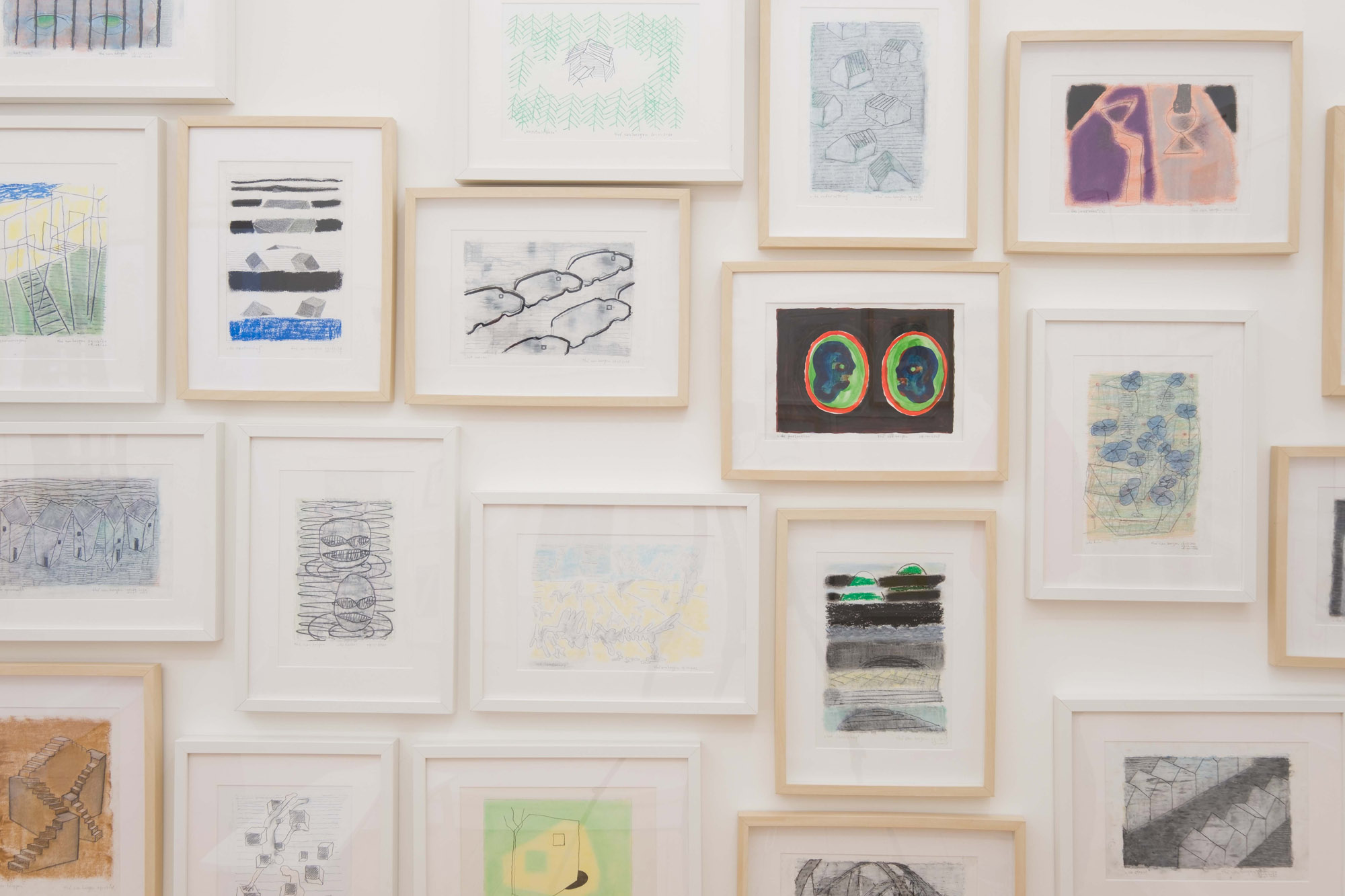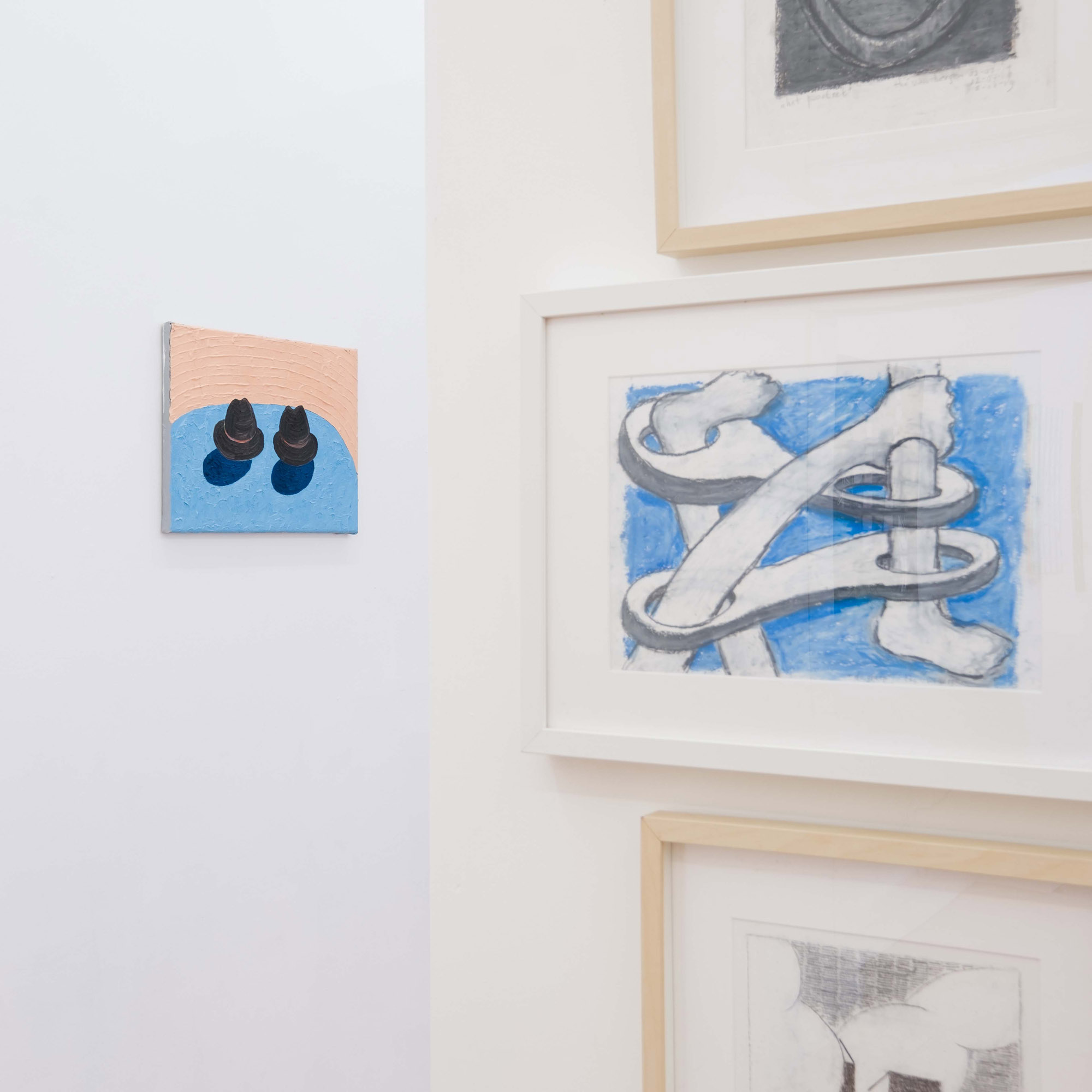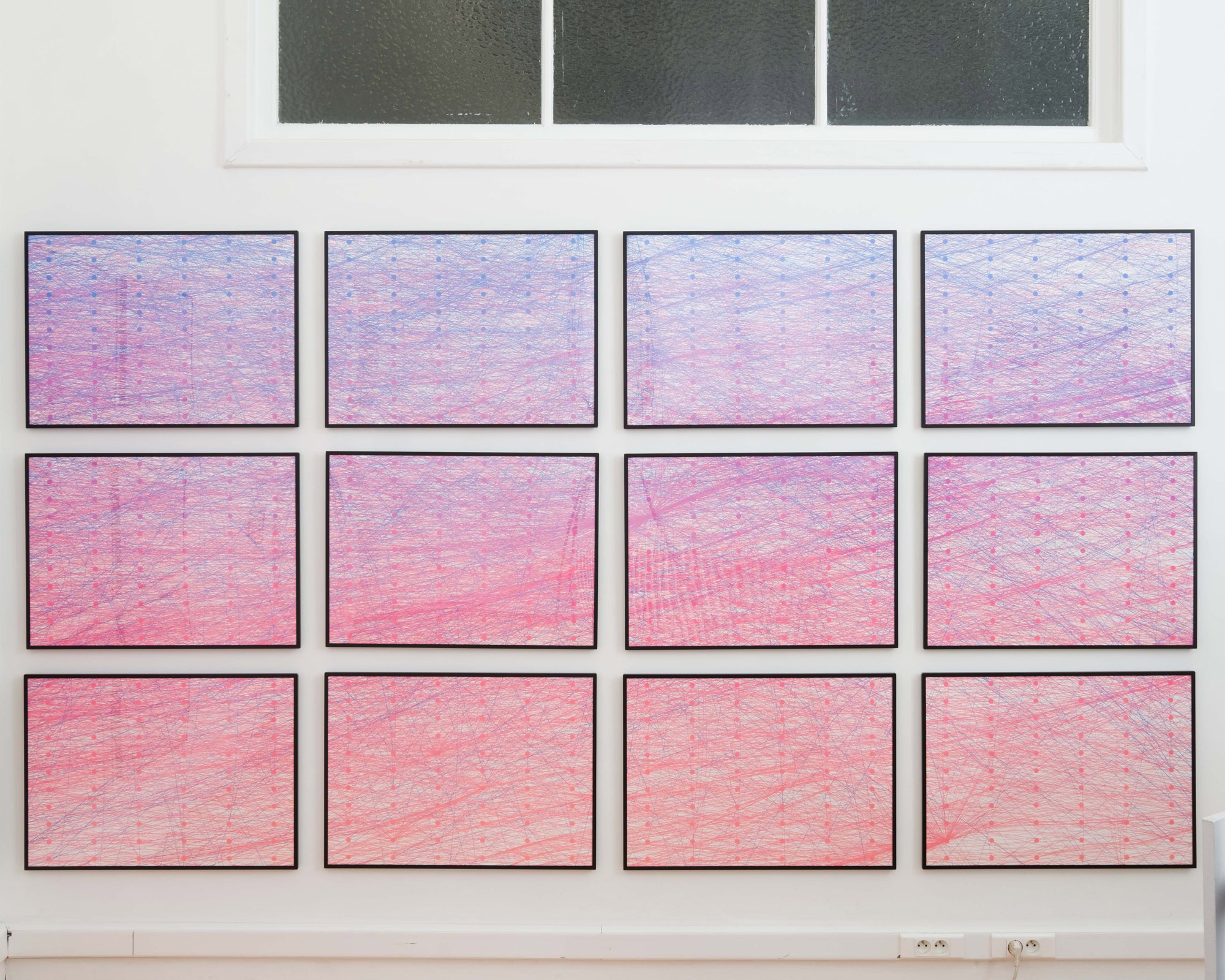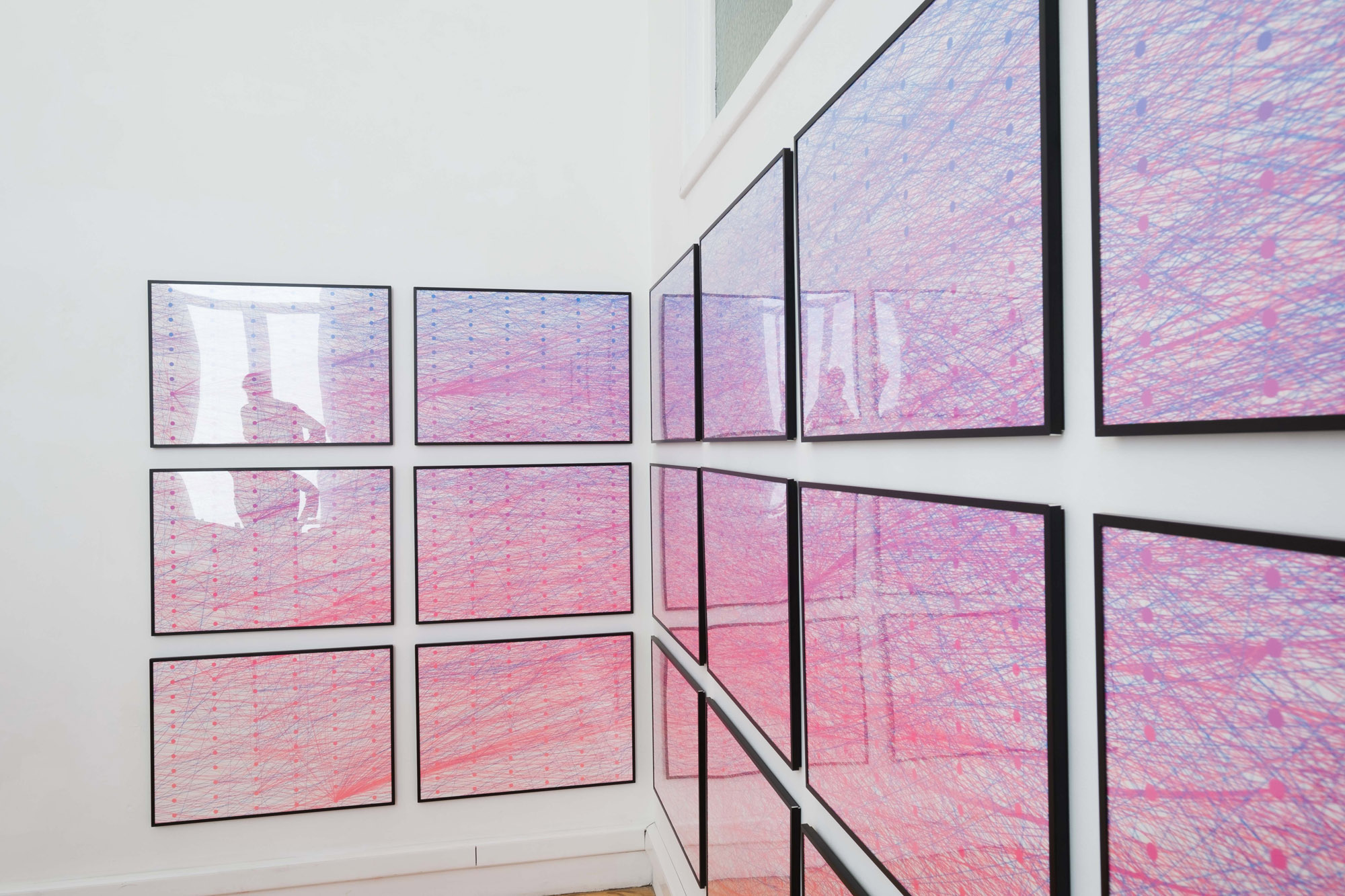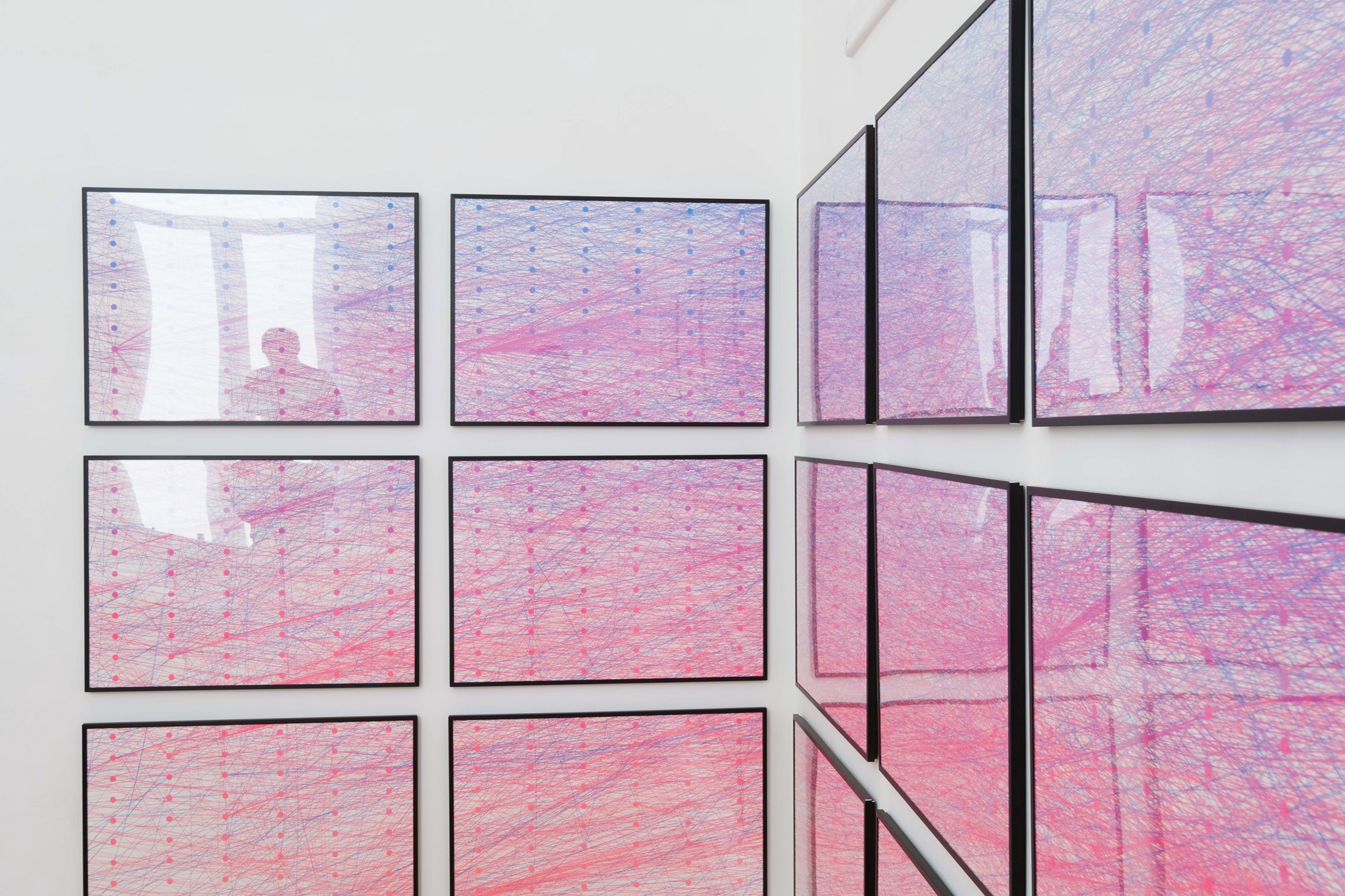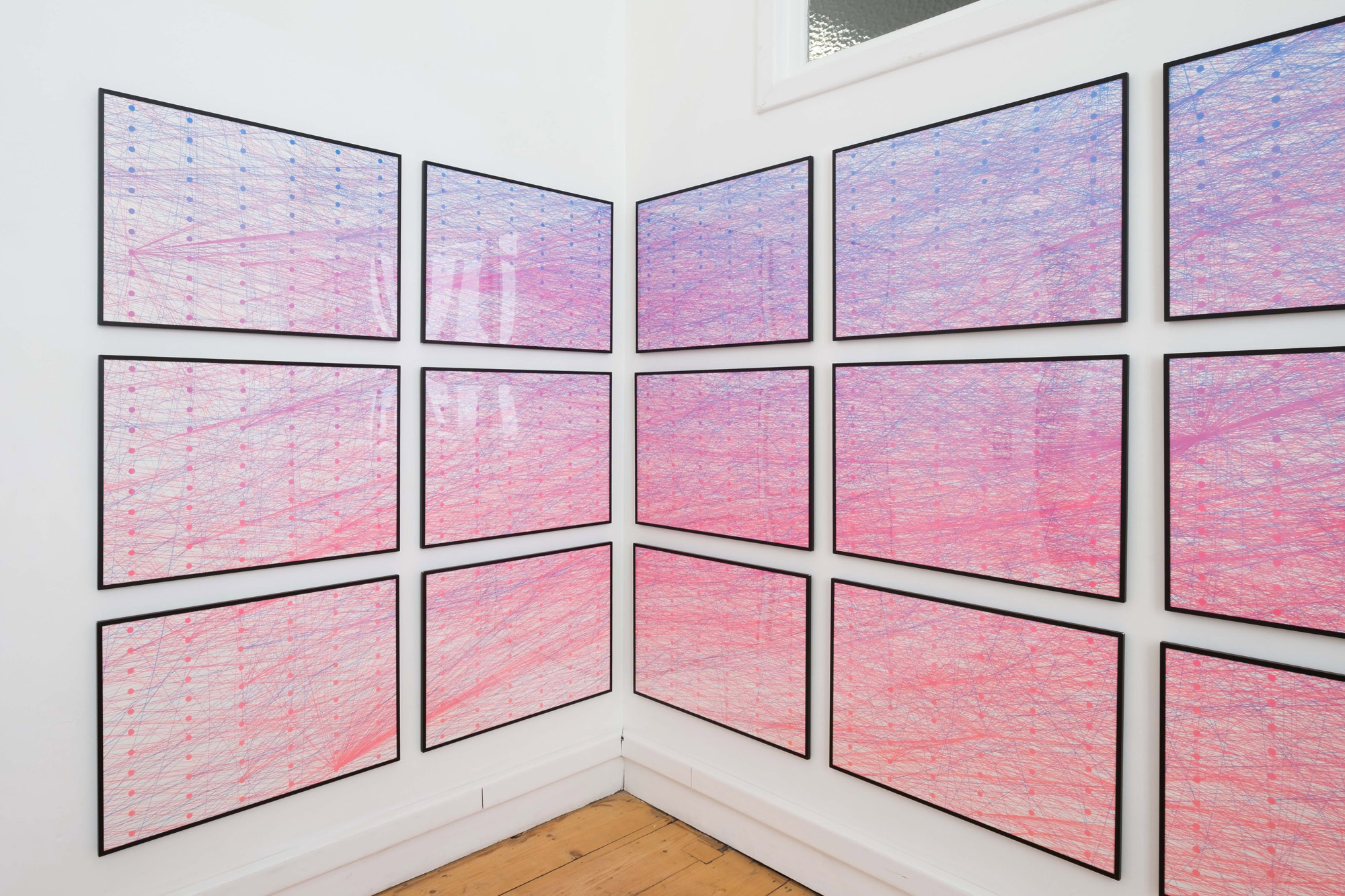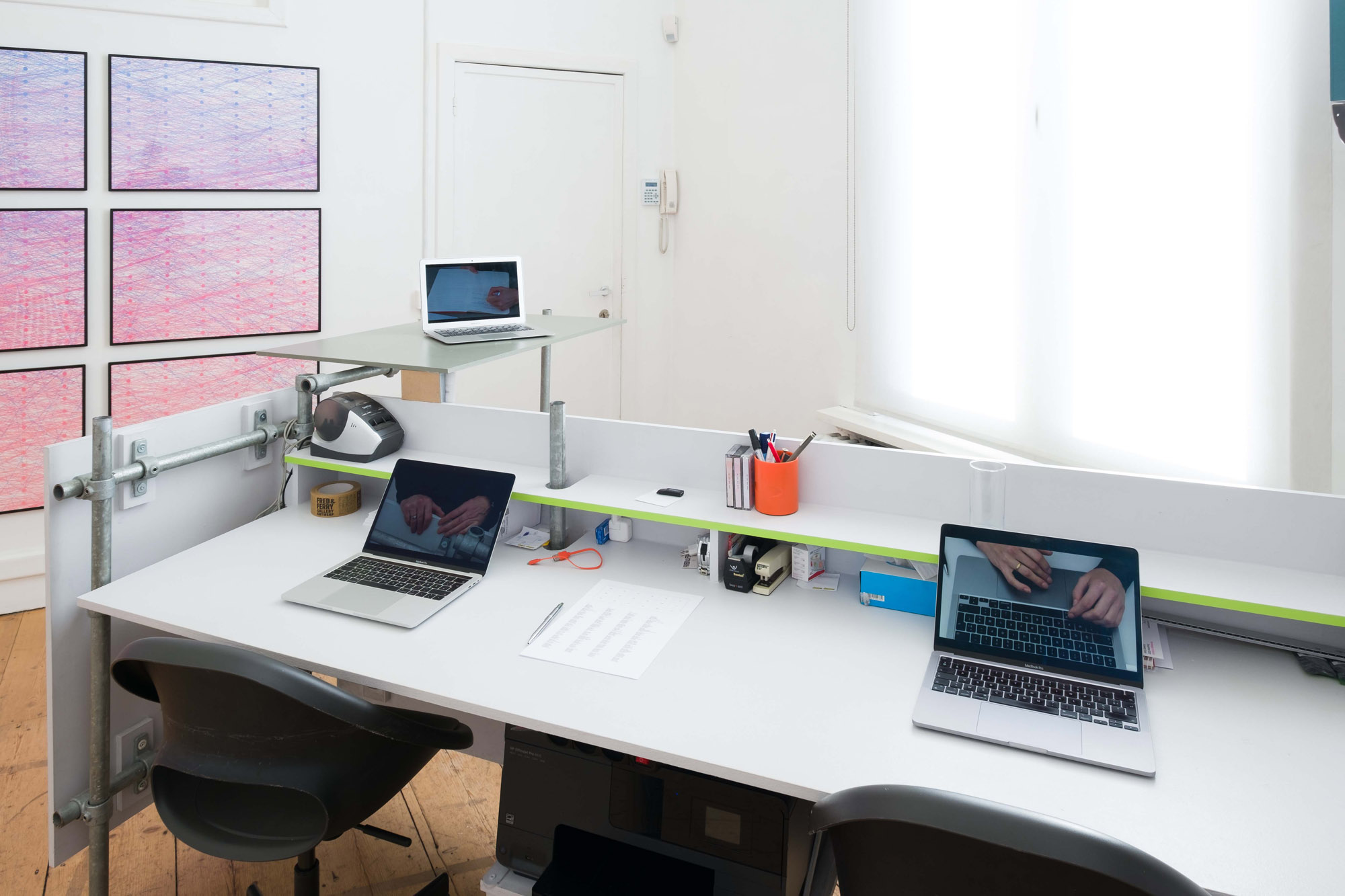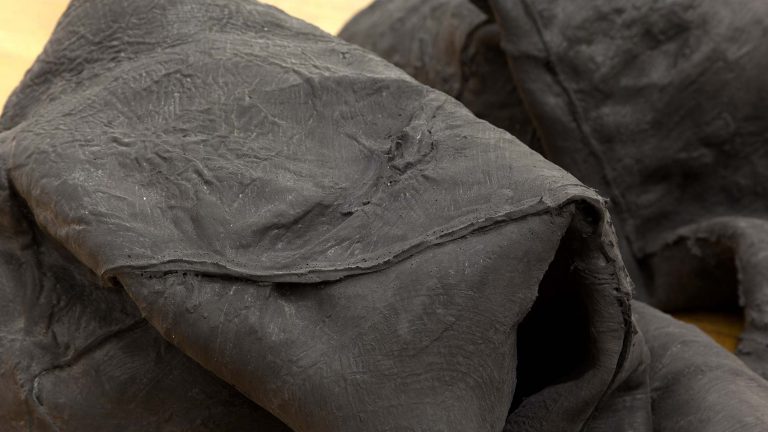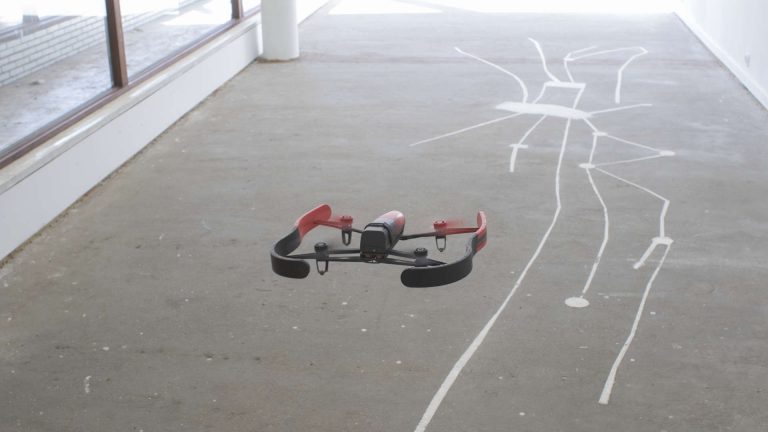Artist: Thé van Bergen
Exhibition title: toujours en route
Venue: Fred & Ferry, Antwerp, Belgium
Date: November 26, 2022 – January 14, 2023
Photography: Tomas Uyttendaele / all images copyright and courtesy of the artist and Fred & Ferry, Antwerp
Dear Thé,
I know, as an exhibition text, a letter is rather unexpected, unusual. Uncomfortable, a little at least, for me too: this is the first time that I’m so explicitly present in my writing. However, a classic text just wouldn’t do – there have been chronological career overviews about you aplenty in the past five decades. It made me wonder: what do I contribute? You yourself also alluded to a personal take, instead of a detached factuality. Inspired by your devotion to your medium, I therefore stay as close as possible to mine.
First and foremost, I want to thank you for something you did unwittingly. On the way to our appointment, plagued by profane unpleasantries, I contemplated: “Is what I say true? Do I still like this? A quoi ça sert?” And then I stepped into your studio. The autumn light fell through the windows; paintings and drawings hung, stood, lay everywhere; on thick carpets you had arranged your brushes and tubes; a paint-splattered chair took center stage in the space; thunderous Bach completed the scene. Curiosity sprang into my eyes, air shot into my lungs. Yes, yes, yes.
However, my particular disposition was also impacted by my affinity with painting – or rather: the slight lack thereof. I told you earlier, but now I’m also admitting it on paper: it’s not my cup of tea really. I can’t explain it very well, but unless they are by old or great masters, I often find myself skimming paintings. I understand them, but more often than not I don’t feel them.
I had never seen your work in real life and based on photographs, I found it hard to estimate if the work would grow on me. Thé, I can tell you now: it is near impossible to remain unmoved when you show the layers in a work, when you talk about the magic of manipulated matter on canvas. Do you know that quote from Philip Guston? “Painting is an illusion, a piece of magic, so what you see is not what you see.” I think you must be one of its greatest proponents. You have devoted yourself to painting, I think, not to one day find a definitive essence in its imagining of reality, but to continue to experience the wondrous process of its creation.
You have a boundless urge to create. I think your drawings aptly attest to this. They are related to your paintings, as translations or continuations – only rarely as preparations. They are authentic works that you have continued to make in an endless series, a never-ending stream of consciousness, alongside everything else, regardless of fleeting fashions.
To that end, you make radical choices. Perhaps it is precisely this radicality that provides the necessary vitality? I was certainly struck by this daring to choose, no matter how small or how large the choice – from using the palette knife diagonally with the point at the top left or top right, to blackening out a painting completely because it didn’t work. The decisiveness that enables you to make work, also leads you to break it down. Between the lines of our conversation, I heard a huge inner critic, as determined to destruct as to construct. At the slightest doubt, the most cautious hesitation, he intervenes.
These interventions are not easy to see; they require you to look. But how hard is it to actually look? Looking with time and attention at the scale of the work, the colours, the gesture, the depth? Who notices how the size of the canvas affects the framing; how the bright red-painted border contrasts with the water-green background; how the pasty black shines; how the windows suggest a space? You can practice looking, but sometimes, in a gloomy second, I wonder who would want to. And yet, it can be so beautiful. When I got home, I realized that I had hardly taken any notes during the hours I had spent in your studio, Thé: we had been too busy looking. There was also so much to see – after two hours I was touched by a work that had seemed to appear out of nowhere, as if it “suddenly” hung there.
The longer I looked, the more motifs I saw. Your figurative components are not representations, but imaginations; not retinal drawings of objects, but interpretive approaches to archetypes. The elements that, for years, make up your visual language are always and never the same. Each leg remains a leg, but the way it is put on canvas evolves; the context in which it is placed changes. Earlier writers compared it to a vocabulary from which you can forever form words – so I don’t have to do that anymore.
What strikes me is that your motifs are often incomplete: half a fruit, a chair with three legs, a hand without an arm, a head without a body. I read that as a longing, a missing, but that undeniably says more about me than about you. You don’t plan in advance: “Now I’m going to paint open windows, in that pattern, that give a view of that landscape, and that symbolize a blown opportunity, or impending doom.” You apply oil paint to the canvas, you think it doesn’t work, you apply another layer of pigments, you see a kind of mist appear, you create a panoramic point from which to look at the mist. I now better understand better how your formal language arises from the paint; how it’s not guided by emotion, narration or figuration, but by matter.
Nevertheless – or is it because of this? – I find in your works an image-making that in its simplicity disarms, or disaffects. I’ve seen playful paintings in fresh millennial colours and I’ve seen enigmatic paintings in melancholic tones. However, they all have a pronounced graphic quality, a clarity of line. That you think of Jean Brusselmans as an excellent painter hardly surprises me – now that I have studied him a bit. The Brussels painter devoted his life to painting, regardless of any movement or success. He simplified everyday scenes and geometric patterns with broad, visible brushstrokes that emphasized the paint as a substance. He was an artist’s artist. His wife, too, was his soul mate.
The clarity in your works is also reflected in the titles you give them. Although they seem neutral categories, to me they are attempts to name things as precisely as possible. The e-mail you sent me after my studio visit seems telling: after we had discussed the title of the work that also appears on the exhibition flyer, you started to think that it didn’t fit after all. More than a “disability” you considered it a “restriction”, but you thought that was an ugly word, so it became “The Restraint” – a beautiful word.
There are some titles that refer to classics of painting: “the interior”, “the still life”, “the portrait”, “the landscape”. I think it’s a serendipitous twist of fate that you’ve come to that, after you conceptually deconstructed everything from the painterly tradition you had learned at the academy in the 1970s. (As a side-note, I thought there was something about those rigid, repetitive arrangements, those consistent systems, too.)
Perhaps my favourite title is “toujours en route”.
I suspected in advance that it would refer to your process. I had read that your works were created in steps, layers, flowing, following one after the other. That it can take years – the years on the back of the canvas confirm this – before a work is “finished”, because so much is happening continuously, “en route”. That you are aware from the beginning that every action, no matter how powerful and chosen, is temporary. It is a well-known quote, but oh so appropriate: “rien ne se perd, rien ne se crée, tout se transforme.”
In addition, however, you told me how your life unfolds ‘en route’: between Antwerp and the Ardennes, between children abroad. With a notorious sense of orientation and a forgetful mind not a simple feat, I assumed, but you clarified: “This fundamental feeling of being non-oriented, of being lost, of not having a grip on anything, is precisely for me the most suitable condition to start, from the search for something to hold on to, the road to an image.”
In that sense, the title also refers to your years of practice in its entirety. How you have been ‘toujours en route’ since the 1960s until now. You have followed all the tours and detours, all the expected and perhaps even more unexpected ones, in pursuit of painting, which fascinates you so immensely. Thé, what else can a person say to that than: stay ‘toujours en route’, keep looking for the wonder, ‘with difficulty, but with pleasure’, as you said so eloquently.
Thank you, and warmest wishes,
-Eline





